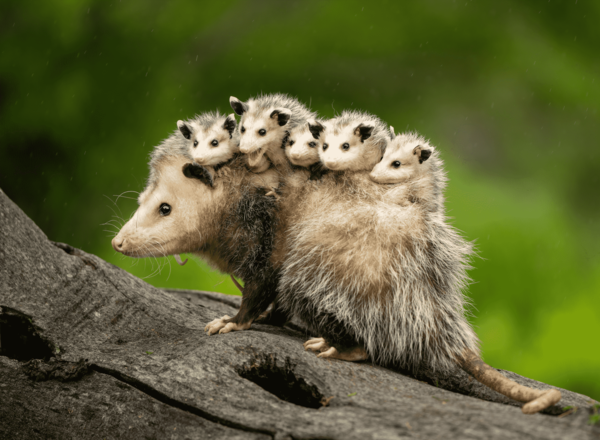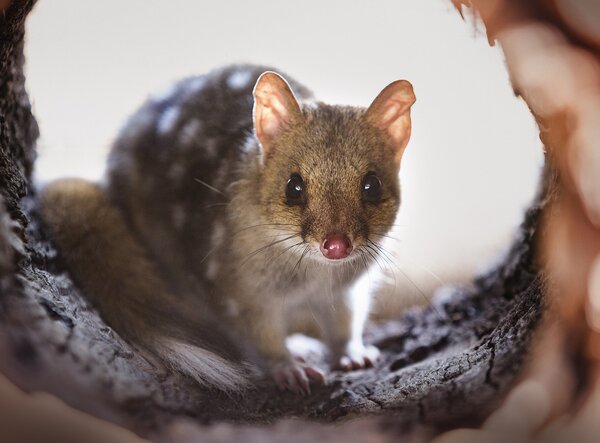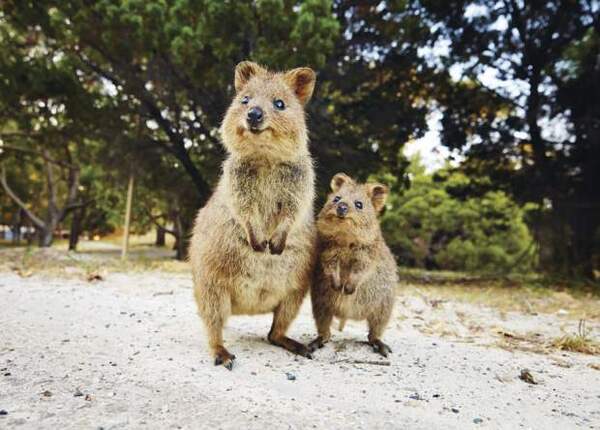Marsupials are truly some of the most unique animals on the planet, known for the distinctive trait of carrying their young in a pouch. But this is only the tip of the iceberg when it comes to their fascinating biology and behavior. From strange eating habits to survival strategies that seem straight out of a science fiction novel, marsupials constantly surprise us. Below is an updated and more detailed list of 25 amazing marsupial facts.

Female kangaroos possess a remarkable reproductive system. Two of their vaginas are used to transport sperm to the uterus, while the third is used for the birth of their joey. After a kangaroo is born—tiny, blind, and undeveloped—it instinctively crawls into the mother's pouch, where it latches onto a nipple and continues to grow. This allows female kangaroos to potentially carry three joeys at different stages of development: one in the uterus, one in the pouch, and one that has left the pouch but still nurses.

In Tasmania, some wallabies are known to consume opium poppies, used for medicinal purposes. When they ingest the opiates, they exhibit unusual behavior, including hopping in circles, which leads to the creation of crop circles in the poppy fields. Though amusing, this behavior highlights the strange effects of narcotics even in wildlife.

Around 75% of koalas, especially in Queensland, are infected with Chlamydia pecorum. This sexually transmitted disease affects the reproductive health of koalas and can lead to blindness and infertility. Conservationists are working on vaccines to combat the infection, which is exacerbated in captive populations due to limited genetic diversity and increased close contact.

The phrase “playing possum” refers to the involuntary reaction of opossums when they face extreme stress or danger. They enter a catatonic state, appearing dead to predators. Their bodies go limp, their breathing slows, and they even secrete a foul-smelling fluid to mimic the scent of decay, convincing potential attackers that they are no longer viable prey.

Opossums possess a unique protein called Lethal Toxin Neutralizing Factor (LTNF), which allows them to survive the bites of many venomous snakes, including rattlesnakes and pit vipers. This adaptation has intrigued scientists, who are studying it for potential applications in creating snakebite antidotes for humans and livestock.

Wombats are known for their oddly shaped cube-like feces, which is believed to help the poop stay in place and mark their territory without rolling away. Researchers discovered that the elasticity of their intestines, combined with slow digestion, allows the poop to take this shape. This unique adaptation is key for communication between wombats in their dark, burrow-based environments.

Tasmanian devils engage in aggressive behaviors, including loud sneezes, when competing for food or mates. These sneezes are a way to assert dominance without having to fight, reducing the risk of injury. Devils are also known for their distinctive, ear-piercing screams, which serve a similar function in intimidation.

Numbats, an endangered marsupial, are termite specialists, consuming up to 20,000 termites every day. Unlike many other marsupials, numbats are active during the day, using their long tongues to extract termites from narrow cracks in the bark or soil. Conservation efforts are underway to protect their natural habitat, which is being threatened by deforestation.

Bandicoots hold the record for the shortest known pregnancy among mammals, lasting just 12 days. After birth, the tiny, underdeveloped offspring crawl into the mother’s pouch where they continue their growth. This short gestation period allows bandicoots to reproduce quickly and helps their population survive in harsh environments.

Woylies, small marsupials found in Australia, play an important role in the ecosystem. When they dig for fungi and other food, they naturally aerate the soil, which helps with water absorption and plant growth. Additionally, they help disperse seeds across their habitats, making them essential for maintaining biodiversity.

Bilbies, desert-dwelling marsupials, have evolved to get all the moisture they need from their food, such as seeds, insects, and bulbs. This adaptation allows them to survive in some of the harshest, driest environments on the planet, where water sources are scarce.

Spotted-tail quolls have an unusual communal behavior when it comes to defecation. These territorial marsupials use the same location repeatedly to mark their territory, creating communal latrines. This behavior also helps them communicate with other quolls through scent-marking.

Quokkas, often described as the "happiest animals on earth" due to their smiling faces, employ a brutal survival strategy. When threatened by predators, a mother quokka will eject her joey from her pouch, leaving it behind as a distraction while she escapes. This behavior, while harsh, increases the mother's chance of survival.

Dunnarts, small insectivorous marsupials, have a fascinating survival trait: their newborns can absorb oxygen through their skin before their lungs are fully developed. This ability allows the tiny, underdeveloped young to survive in the critical early stages of life.

The male antechinus has one of the most extreme life cycles. During their single mating season, males go through a period of frenzied mating, exhausting their energy reserves to the point of death. After mating, the males succumb to immune system failure, leaving only the females to care for the next generation.

Male sugar gliders, small nocturnal marsupials, have a distinctive bald spot on their heads where their scent glands are located. They use these glands to mark territory by rubbing their heads against surfaces or other sugar gliders, signaling their presence and dominance.

The musky rat-kangaroo, the smallest member of the kangaroo family, is unique to a small rainforest region in northeastern Australia. Unlike other kangaroos, they are diurnal and prefer dense, wet habitats. Their rarity makes them an important species for conservation efforts.

The male cuscus, a tree-dwelling marsupial, uses a rather unusual courtship method: biting. To win over a potential mate, the male will bite her and chase her through the trees, often at night. This behavior, while aggressive, is part of their mating ritual.

Marsupial moles, blind and earless creatures that live underground, have a pouch that faces backward. This unusual adaptation prevents sand from filling the pouch while they burrow, protecting their developing young from the elements.

The Monito del Monte is the only surviving member of the ancient Microbiotheria order, making it a living fossil. Found in the forests of Chile and Argentina, this small marsupial is a distant relative of Australian marsupials and provides insight into the early evolution of marsupials.

Marsupials diverged from placental mammals over 160 million years ago. Most modern marsupials are found in Australia and nearby regions, while others, like the opossum, inhabit the Americas. Their ancient evolutionary history provides a window into the survival strategies of early mammals.

Koalas are known for their long naps, sleeping up to 22 hours a day to conserve energy. Their diet of eucalyptus leaves is nutrient-poor and takes a long time to digest, requiring the koalas to spend most of their time resting to survive.

Kangaroos have a fascinating ability called embryonic diapause, where they can pause their pregnancy until conditions are more favorable. This means a female can control when she gives birth, often waiting until her first joey has left the pouch to begin developing the next one.

Though they look slow and heavy, wombats can run up to 40 km/h (25 mph) for short distances to escape predators. Their powerful limbs and compact bodies make them strong diggers and surprisingly agile when they need to be.

Marsupials are one of the best examples of nature's diversity and adaptability. From their unique reproductive systems to their incredible survival skills, they are a reminder of how life evolves in response to environmental pressures, creating creatures perfectly suited to their specific habitats.
These 25 updated facts not only highlight the strange and wonderful aspects of marsupials but also reveal how much we can learn from their unique adaptations. Whether it's their highly specialized reproductive strategies or their ecological roles, marsupials continue to captivate scientists and nature lovers alike.
animal tags: Marsupials
We created this article in conjunction with AI technology, then made sure it was fact-checked and edited by a Animals Top editor.